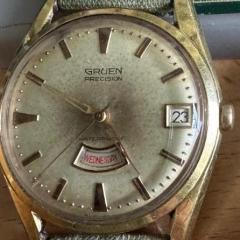Titanium Seiko case muxk.
-
Recently Browsing
- No registered users viewing this page.
-
Topics
-
Posts
-
By RichardHarris123 · Posted
Hello and welcome from Leeds, England. Yes, you can use a modern mainspring. Breaking grease, protects the barrel from excessive wear. -
It depends what type and era of watches you think you'll be looking at. The ETA mentioned by @HectorLooi is a good option but you could look at some Seiko/Hattori as a lot of off brand watches use these.
-
By HectorLooi · Posted
Probably any of the ETA quartz movements. I like the 955.112 as AliExpress has the PCB. But probably get a lot of quartz watches from eBay and see what you get. I've gotten a batch with a Bulova quartz and a 214 and a couple of Fossils. Totally worth it. -
I had to go back and verify what were talking about because I wasn't sure with the terminology what exactly you are discussing. Then yes depending upon where you are on the planet and when you are there is all sorts of differences. When I was in school the instructor George showed me how to make one. Such a simple device to make and so incredibly useful for 18 size full plate watches I wouldn't think of putting one together without it.
-
By CoastsidePockets · Posted
Recently, I serviced a Gruen 490SS automatic but ran into a mainspring issue. Apparently, this movement uses an older style automatic mainspring. Rather than a bridle, a short piece of mainspring is wound into the barrel with a metal tab at the end facing toward the arbor and a regular manual mainspring is inserted inside this. I suppose it still needs braking grease, but I am not sure. this is the first time I have run into this type of automatic spring setup. Well, I broke this small piece. Any ideas of whether I can replace this whole system with a more modern bridle mainspring or possibly fabricate this smaller piece of mainspring out of the end of another mainspring? Below is a photo of the original spring, a new spring I bought, and the small piece and its broken end tab, all seem to be old. Loved working on this movement and very bummed I was so clumsy and didn't think this through before taking it apart. I have about 20 working watches now (and many non-working projects mainly due to my poor judgement). I am learning (and relearning, unfortunately) not to go into an unknown situation without doing some research and careful thinking. I seem to need to relearn this lesson too often. Anyway, I would appreciate any advice. First time using this forum and a graduate of Mark's first 3 courses and loving every minute of this most rewarding hobby.
-







Recommended Posts